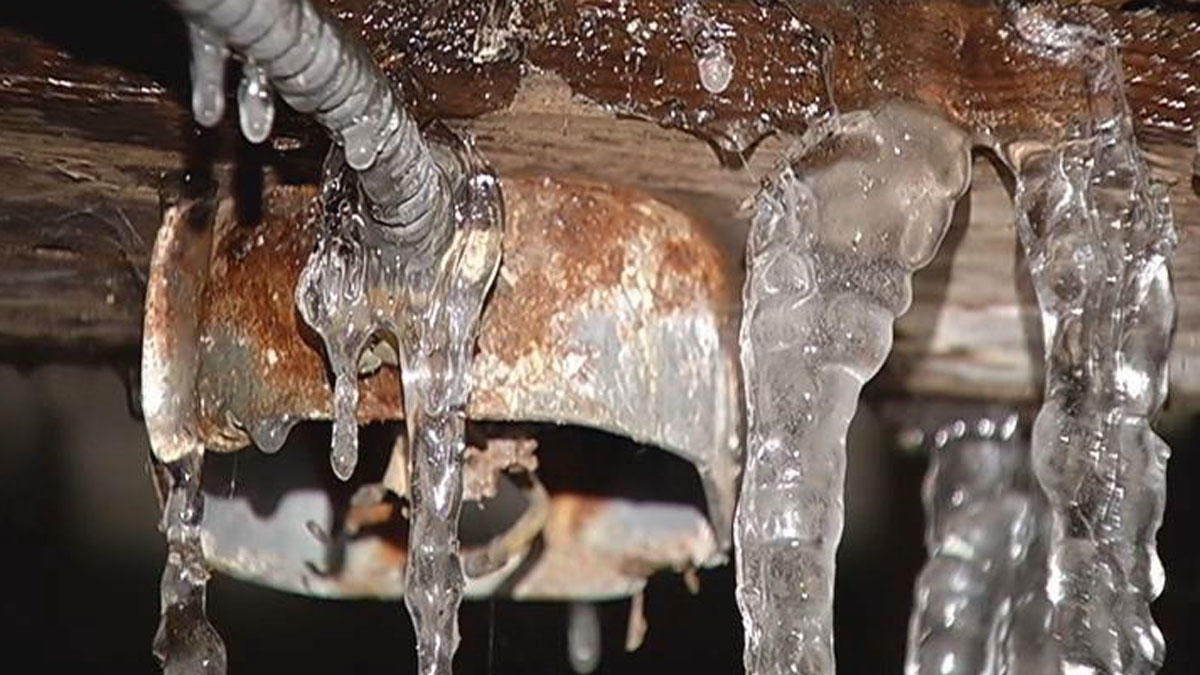Essential Advice to Prevent Frozen Pipes in Winter
Essential Advice to Prevent Frozen Pipes in Winter
Blog Article
On this page on the next paragraphs you will find some reliable news around How To Avoid Freezing Pipes.

Cold weather can ruin your pipes, specifically by freezing pipes. Right here's just how to avoid it from happening and what to do if it does.
Intro
As temperatures drop, the threat of icy pipelines rises, potentially resulting in pricey repair work and water damage. Recognizing just how to avoid frozen pipelines is crucial for home owners in cool climates.
Avoidance Tips
Protecting at risk pipelines
Wrap pipelines in insulation sleeves or use heat tape to protect them from freezing temperatures. Concentrate on pipes in unheated or external areas of the home.
Home heating methods
Keep interior rooms sufficiently heated, especially locations with plumbing. Open up cupboard doors to enable cozy air to circulate around pipes under sinks.
Exactly how to identify frozen pipelines
Search for decreased water flow from taps, uncommon smells or sounds from pipelines, and visible frost on revealed pipes.
Long-Term Solutions
Structural modifications
Think about rerouting pipes far from outside wall surfaces or unheated locations. Add added insulation to attics, basements, and crawl spaces.
Updating insulation
Buy high-grade insulation for pipelines, attics, and wall surfaces. Correct insulation aids maintain regular temperature levels and lowers the risk of icy pipes.
Securing Outside Pipes
Yard hoses and outside faucets
Disconnect and drain yard pipes prior to winter season. Install frost-proof spigots or cover outdoor taps with insulated caps.
Comprehending Frozen Pipes
What creates pipelines to freeze?
Pipelines ice up when revealed to temperature levels below 32 ° F (0 ° C) for extended durations. As water inside the pipes freezes, it expands, putting pressure on the pipe wall surfaces and potentially creating them to burst.
Dangers and damages
Icy pipelines can cause supply of water disturbances, home damages, and pricey fixings. Burst pipes can flooding homes and create substantial structural damages.
Signs of Frozen Pipes
Identifying frozen pipes early can prevent them from breaking.
What to Do If Your Pipelines Freeze
Immediate activities to take
If you think icy pipelines, maintain taps open up to alleviate stress as the ice thaws. Utilize a hairdryer or towels taken in hot water to thaw pipelines gradually.
Final thought
Stopping icy pipelines needs aggressive procedures and fast actions. By recognizing the reasons, indications, and safety nets, homeowners can protect their pipes during winter.
5 Ways to Prevent Frozen Pipes
Drain Outdoor Faucets and Disconnect Hoses
First, close the shut-off valve that controls the flow of water in the pipe to your outdoor faucet. Then, head outside to disconnect and drain your hose and open the outdoor faucet to allow the water to completely drain out of the line. Turn off the faucet when done. Finally, head back to the shut-off valve and drain the remaining water inside the pipe into a bucket or container. Additionally, if you have a home irrigation system, you should consider hiring an expert to clear the system of water each year.
Insulate Pipes
One of the best and most cost-effective methods for preventing frozen water pipes is to wrap your pipes with insulation. This is especially important for areas in your home that aren’t exposed to heat, such as an attic. We suggest using foam sleeves, which can typically be found at your local hardware store.
Keep Heat Running at 65
Your pipes are located inside your walls, and the temperature there is much colder than the rest of the house. To prevent your pipes from freezing, The Insurance Information Institute suggests that you keep your home heated to at least 65 degrees, even when traveling. You may want to invest in smart devices that can keep an eye on the temperature in your home while you’re away.
Leave Water Dripping
Moving water — even a small trickle — can prevent ice from forming inside your pipes. When freezing temps are imminent, start a drip of water from all faucets that serve exposed pipes. Leaving a few faucets running will also help relieve pressure inside the pipes and help prevent a rupture if the water inside freezes.
Open Cupboard Doors
Warm your kitchen and bathroom pipes by opening cupboards and vanities. You should also leave your interior doors ajar to help warm air circulate evenly throughout your home.

I found that page about 6 Ways to Prevent Frozen Pipes while scouting around the search engines. Sharing is nice. You just don't know, you will be doing someone a favor. I appreciate your readership.
Click Here Report this page